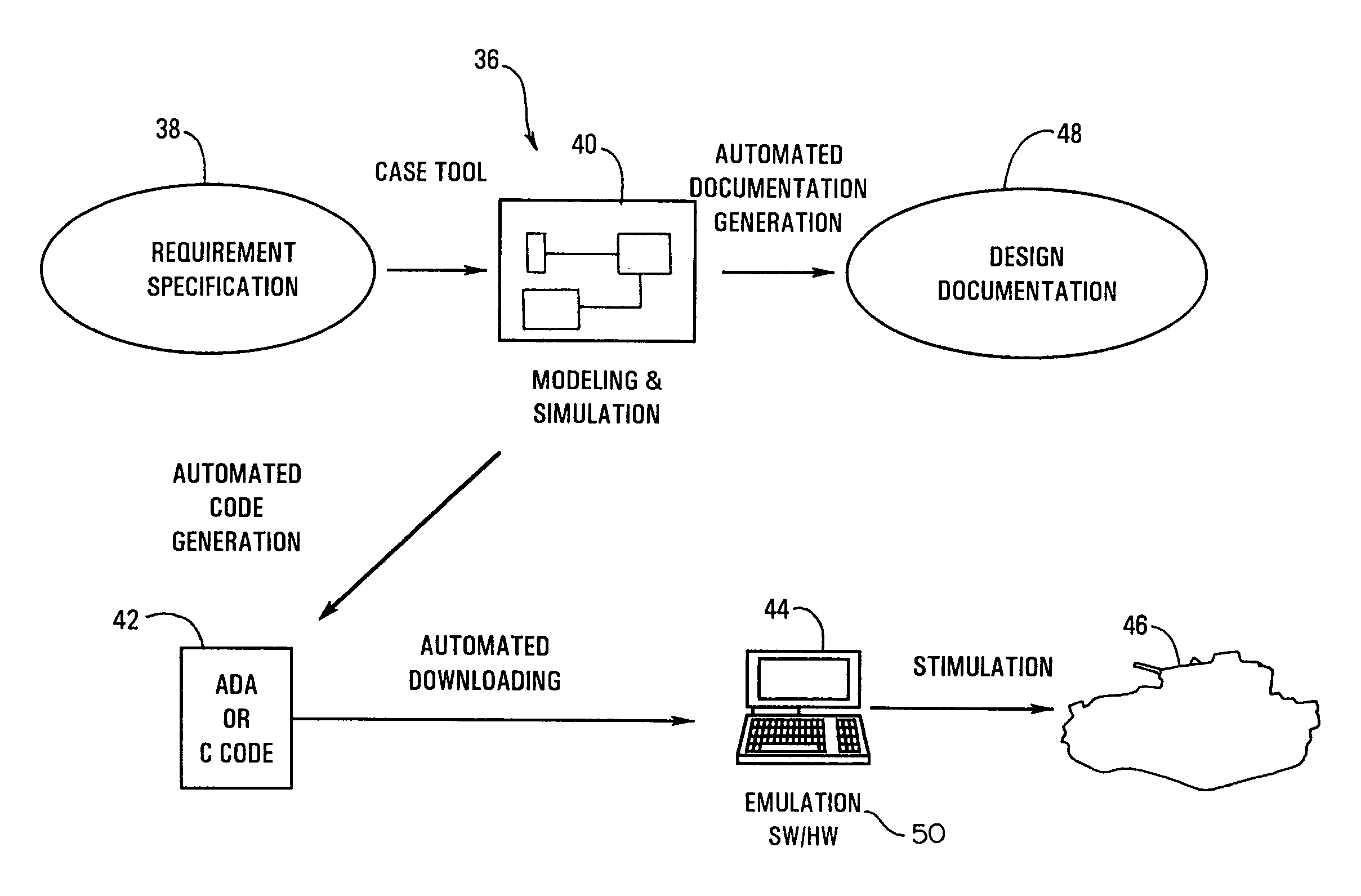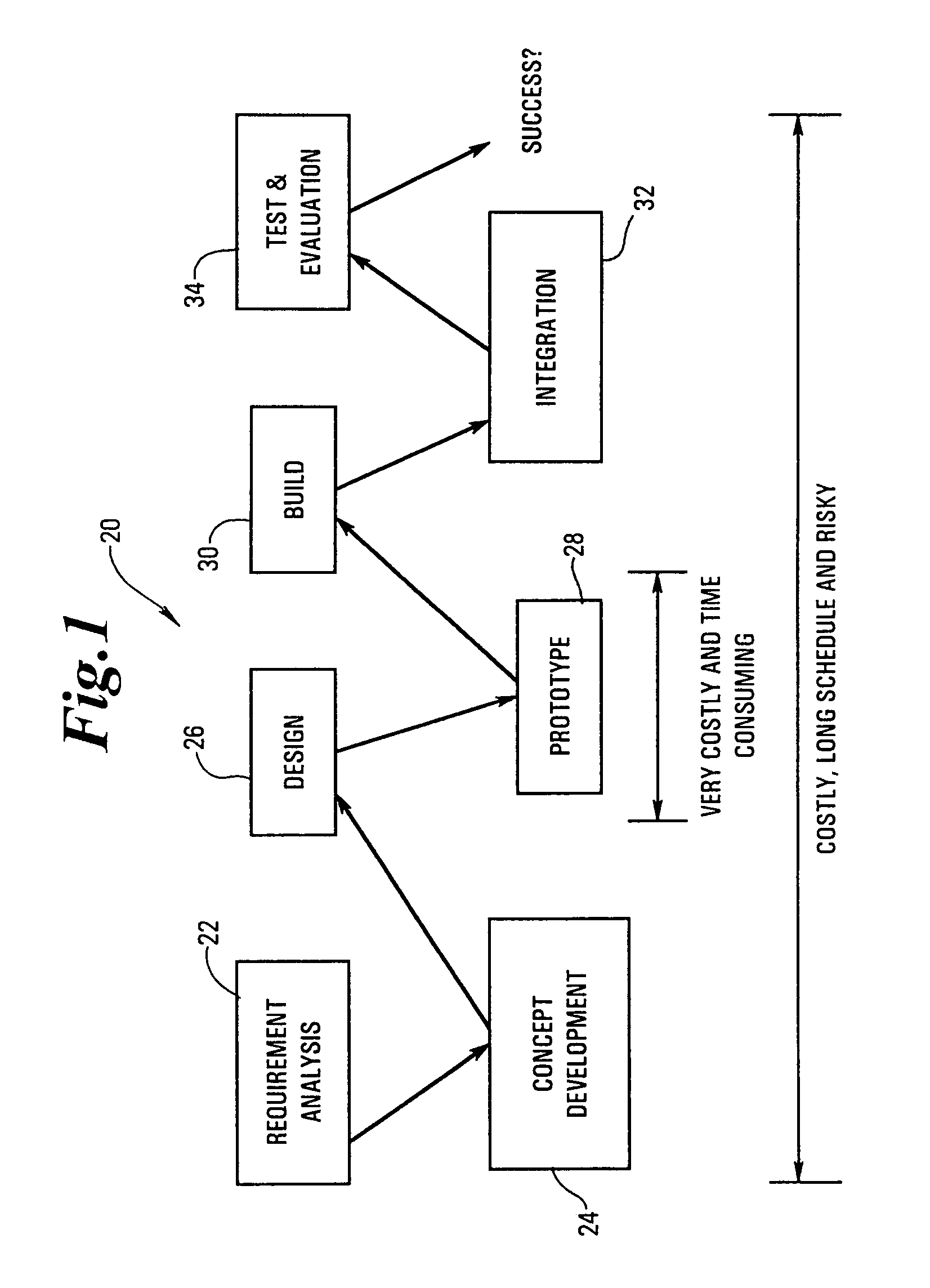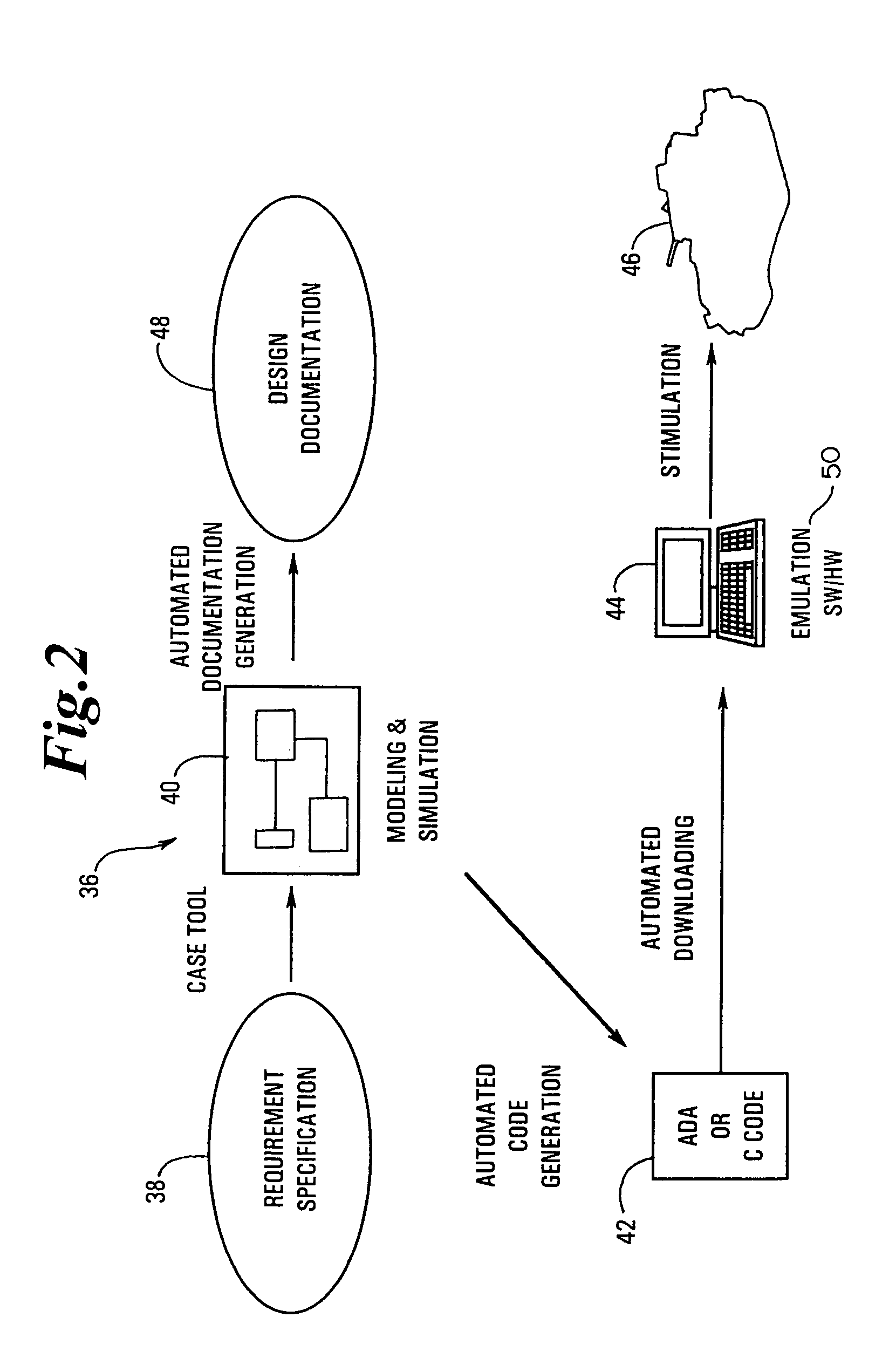Control system architecture for a multi-component armament system
a control system and multi-component technology, applied in the field of multi-component armament or weaponry systems, can solve the problems that the delivery of messages is usually not deterministic, and achieve the effects of improving system robustness, promoting system scalability, and overcompensating slow points and broken lines of communication
- Summary
- Abstract
- Description
- Claims
- Application Information
AI Technical Summary
Benefits of technology
Problems solved by technology
Method used
Image
Examples
Embodiment Construction
[0067]Referring to FIG. 1, the prior art conventional engineering development process is shown generally at 20. The steps of the prior art design process are, in order, generation of system requirements 22, development of concepts 24, produce designs based on the concepts 26, prototyping 28, building individual systems 30, integrating those individual systems 32, and performing testing and evaluation of the completed system 34. If the testing and evaluation stage 34 revealed that the particular design is not acceptable, then the process must be reiterated starting back at the prototype stage 28, or earlier.
[0068]Referring to FIG. 2, the Simulation-Emulation-Stimulation (SES) process, generally designated at 36 minimizes the required iterations and condenses the steps of the prior conventional development process. SES comprises the steps of using system specifications to generate a set of system requirements 38, performing modeling and simulation (M&S) 40 of the multi-component armam...
PUM
 Login to View More
Login to View More Abstract
Description
Claims
Application Information
 Login to View More
Login to View More - R&D
- Intellectual Property
- Life Sciences
- Materials
- Tech Scout
- Unparalleled Data Quality
- Higher Quality Content
- 60% Fewer Hallucinations
Browse by: Latest US Patents, China's latest patents, Technical Efficacy Thesaurus, Application Domain, Technology Topic, Popular Technical Reports.
© 2025 PatSnap. All rights reserved.Legal|Privacy policy|Modern Slavery Act Transparency Statement|Sitemap|About US| Contact US: help@patsnap.com



